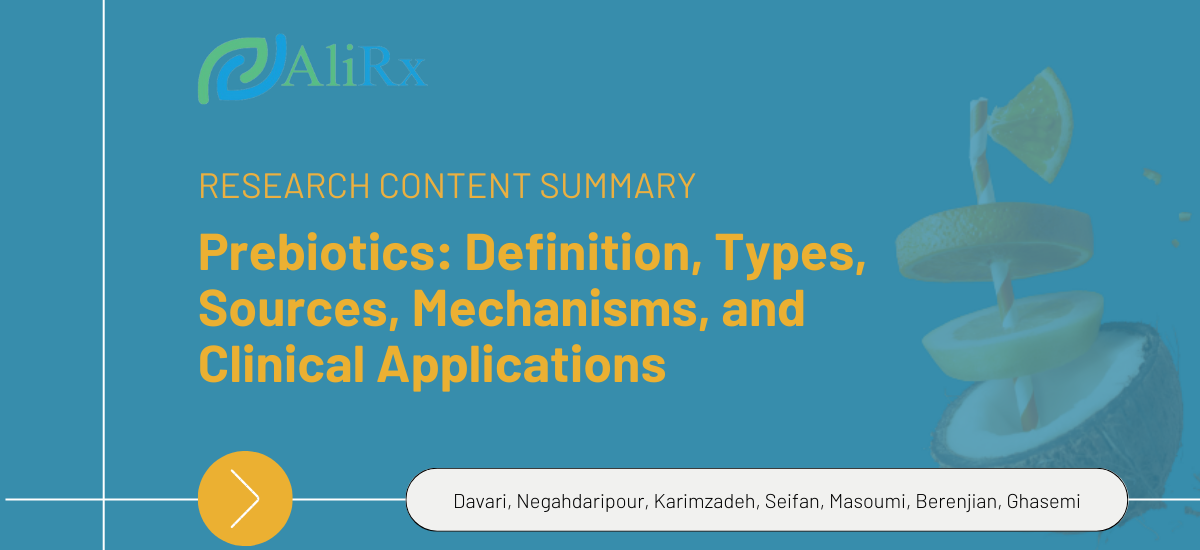Authors: Dorna Davani-Davari,1 Manica Negahdaripour,2,3 Iman Karimzadeh,4 Mostafa Seifan,5,* Milad Mohkam,6 Seyed Jalil Masoumi,7 Aydin Berenjian,5 and Younes Ghasemi2,3,7,8,*
Full Research Paper: https://www.ncbi.nlm.nih.gov/pmc/articles/PMC6463098/
Research Paper Summary:
The research paper titled “Prebiotics: Definition, Types, Sources, Mechanisms, and Clinical Applications” by Dorna Davani-Davari provides an overview of prebiotics, a type of dietary fiber that promotes the growth of beneficial gut bacteria.
The paper defines prebiotics as “non-digestible food ingredients that selectively stimulate the growth and/or activity of beneficial microorganisms in the colon.” It then goes on to describe the different types of prebiotics, including inulin, fructooligosaccharides (FOS), galactooligosaccharides (GOS), and others.
The sources of prebiotics are also discussed, including natural sources such as fruits, vegetables, and grains, as well as commercially available supplements. The mechanisms by which prebiotics work are explained, including their ability to resist digestion in the small intestine and be selectively fermented by beneficial bacteria in the colon.
The paper also highlights the clinical applications of prebiotics, including their potential to improve gut health and prevent or treat a range of health conditions such as inflammatory bowel disease, irritable bowel syndrome, and colorectal cancer. The importance of individualized approaches to prebiotic intake is emphasized, as different types of prebiotics may have varying effects on gut health depending on an individual’s microbiome composition.
Overall, the paper provides a comprehensive overview of prebiotics, sources, mechanisms, and potential clinical applications. It highlights the importance of prebiotics in promoting gut health and their potential as a therapeutic tool for a range of health conditions.





